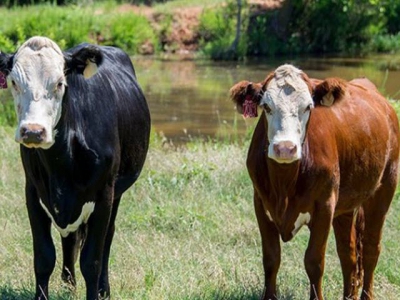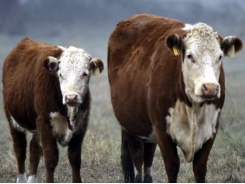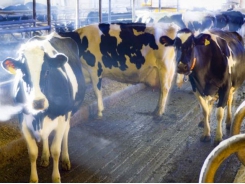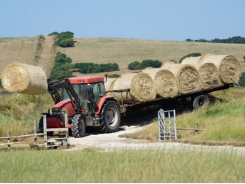Ensure fall-calving replacement heifers ready for breeding season

Producers should work with veterinarian to make sure replacement heifers are properly immunized and adjust supplementation so they meet target breeding weights.
Oklahoma State University animal science research from 2009 showed replacement heifers should weigh 60% or more of their mature weight to ensure a high percentage of heifers are cycling at the start of the breeding season.
Cattle producers who employ fall calving in their herds currently should be making certain that replacement heifers to be used in late November are ready, according to Oklahoma State University.
Producers should be working with their large animal veterinarian to ensure that their yearling replacement heifers are properly immunized. Replacement heifers should be immunized for respiratory diseases such as infectious bovine rhinotracheitis (IBR) and bovine viral diarrhea (BVD), the university announcement said.
“IBR is a highly contagious, infectious respiratory disease that can affect young and older cattle,” said Dr. Barry Whitworth, Oklahoma State University veterinarian and Oklahoma Cooperative Extension Service food animal quality and health specialist. “In addition to respiratory disease, the virus can cause a number of systemic ailments, including abortions.”
BVD is a disease in cattle and other ruminants caused by the BVD virus that may result in resorption, abortion and stillbirth. Congenitally infected fetuses that survive may be born as infected calves.
“The infection in these calves will persist throughout the animal’s entire life, and they will shed BVD virus continuously in the farm or ranch environment,” Whitworth said.
Replacement heifers should be vaccinated at least one month before the start of the breeding season, he added.
“This would be a good time to include other reproductive disease protection that may be recommended by your veterinarian,” Whitworth said. “Examples of other immunizations that should be considered include leptospirosis and campylobacter, sometimes called vibriosis.”
Also, weigh the heifers if a set of scales is available. There is time to adjust the supplementation fed to the heifers to ensure that they meet the target weight at the start of the breeding season. Oklahoma State animal science research from 2009 showed that replacement heifers should weigh 60% or more of their mature weight to ensure that a high percentage of heifers are cycling at the start of the breeding season, the announcement said.
“If these heifers will eventually grow into 1,200 lb. cows, they must weigh 720 lb. at the beginning of estrous synchronization and artificial insemination or bull turnout if natural breeding is used,” said Glenn Selk, Oklahoma State Cooperative Extension animal scientist emeritus and managing editor of the university’s "Cow-Calf Corner" newsletter.
Calculate the weight gain needed between now and the start of the breeding season to see if additional energy is required to achieve the desired weight gain. Some producers may choose to grow heifers at a lower rate and attempt to breed them at 55% or less of their estimated mature weight.
“In this scenario, about twice as many heifers need to be raised, synchronized and inseminated in order to ensure adequate numbers are bred in a timely manner to meet the future needs of the herd,” Selk said.
All replacement heifers need to be pregnancy checked about 60 days after the breeding season so non-pregnant heifers can be marketed as soon as possible.
“A number of smaller cow/calf operations will not have scales available to monitor weight gain,” Selk said. “The next best evaluation tool is to monitor body condition of the heifers. If all of the heifers are in a body condition score of six, then they should meet the desired target weight.”
Ribs will be fully covered and not noticeable to the eye in a heifer with a body condition score of six. Hindquarters will be plump and full, Selk said, adding that there will be noticeable sponginess over the foreribs and on each side of the tail head.
“Given adequate summer forage, heifers should need only a small amount of protein supplement, say 1 to 2 lb. of high-protein — about 40% protein — supplement per head per day to maintain adequate body condition going into the breeding season,” Selk said.
Related news
Tools

Phối trộn thức ăn chăn nuôi

Pha dung dịch thủy canh

Định mức cho tôm ăn

Phối trộn phân bón NPK

Xác định tỷ lệ tôm sống

Chuyển đổi đơn vị phân bón

Xác định công suất sục khí

Chuyển đổi đơn vị tôm

Tính diện tích nhà kính

Tính thể tích ao




 Take feed advice to cut carbon emissions, says…
Take feed advice to cut carbon emissions, says…  Alternative feeds may help beef, dairy producers facing…
Alternative feeds may help beef, dairy producers facing…